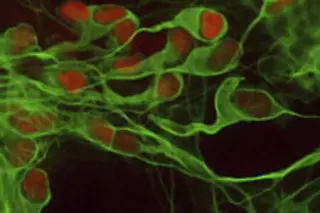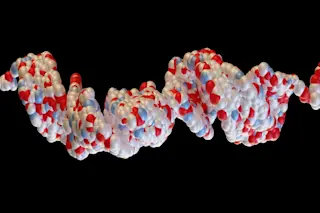In a striking achievement, researchers have taken ordinary skin cells from two elderly women suffering from Lou Gehrig's disease, also known as amyotrophic lateral sclerosis, and have reprogrammed those cells to act like stem cells, the versatile cells that can grow into almost any kind of specialized cell. Then the researchers programmed the cells to turn into motor neurons, the type of nerve cells that waste away and die as ALS progresses. The new nerve cells won't be used in any sort of experimental treatment; instead researchers will look for flaws in these nerve cells to study the disease's mechanism.
"Now we can make limitless supplies of the cells that die in this awful disease. This will allow us to study these neurons, and ALS, in a lab dish, and figure out what's happening in the disease process," said [study coauthor] Dr. Kevin Eggan [Reuters].
This is particularly useful for ...














